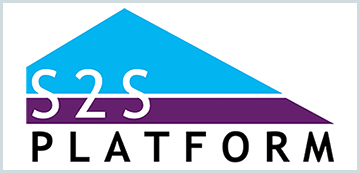heading
Why Source-to-Sea Management
The air we breathe, the food we eat and the climate on which our survival depends are all inextricably linked to source-to-sea systems. And the health of these systems depends heavily on the actions taken on land and along rivers.

All of our upstream activities compound one upon another, leaving virtually no coastal or marine area unaffected. This can be seen in the dead zones created by excess nutrients from agricultural runoff and untreated wastewater, and in sinking deltas because of sediment being trapped upstream. It can also be seen in excessive groundwater use and in plastic waste littering our beaches and oceans. Climate change further exacerbates these problems.
This is where source-to-sea management comes in. The vision of the Action Platform for Source-to-Sea Management is a world in which land, freshwater, coastal and marine resources are managed holistically, balancing benefits for the environment, communities, and economy – from source to sea. This source-to-sea continuum is linked by key aspects of the biophysical system, such as water, biota, sediment, pollutants, materials and ecosystem services. When any of these are altered in one part of the source-to-sea system, those alterations may have impacts either upstream or downstream of where they occur.

This is S2S Platform
The Action Platform for Source-to-Sea Management is a network of organizations committed to promoting, implementing, and building expertise on source-to-sea management.
About the PlatformSource-to-sea management recognizes that there are linkages from land, to freshwater, the coasts and the ocean, creating a continuum from the source to the sea.
The impacts can be on the environment, or they can be social or economic in nature. The source-to-sea approach to management takes these upstream-downstream source-to-sea linkages into account, it takes a holistic view of the source-to-sea system, recognizing that doing so will result in greater benefits for the system as a whole.
Why is source-to-sea management important?
Current governance, investments and operations are often developed from the perspective of a single sector or a single country or municipality, without consideration of how they might impact other parts of the source-to-sea system. Source-to-sea management takes a different approach.
By understanding the source-to-sea system as a whole, decisions are informed by upstream and downstream stakeholder interests. Trade-offs are considered to find the greatest mutual benefits across the entire source-to-sea system. Source-to-sea management also means that there is coordination between sectors to ensure coherence in policies and practice. Strengthening upstream-downstream cooperation and coordination across sectors can avoid unintended negative consequences and give rise to innovative solutions to addressing development challenges.
Addressing the challenges
Applying a source-to-sea perspective when addressing the world’s development challenges increases the opportunity for truly sustainable change. The approach builds on existing frameworks, but broadens the scope beyond traditional and mostly independently managed land and water resources. To acknowledge that there is a strong interconnectedness between land, river basins, coasts, and the ocean, is fundamental – and it is urgently needed, as many development challenges are source-to-sea in nature.
The progress towards achieving the Sustainable Development Goals is being stalled by the absence of political commitment and a coherent approach. The source-to-sea perspective can counter this with its focus on interlinkages and the interdependencies between the SDGs. Such links are evident across the entire SDG agenda, but are particularly strong between SDG 6 on water, SDG 14 on oceans, SDG 15 on land-based ecosystems and SDG 13 on climate. The targets for these SDGs will not be met unless the fragmentation of management and governance structures are addressed.
Addressing development challenges posed by climate change, losses in biodiversity and global crises such as the COVID-19 pandemic need targeted action. But if development challenges are not tackled holistically, tradeoffs between upstream and downstream stakeholders and across sectors will not be adequately addressed. Source-to-sea management allows for open and inclusive dialogues to be held, which will improve the success of policies, planning and investments.
Our approach
The underlying principles of the source-to-sea approach allow it to be an effective solution to addressing the complexities of development challenges.
- Holistic. It addresses upstream and downstream linkages across issues, stakeholders, desired outcomes, costs, and benefits.
- Collaborative. It builds on existing institutions, established methods and ongoing processes.
- Prioritizing. It targets and addresses the issues that hold the greatest potential for generating positive impacts for the system.
- Participatory. It engages upstream and downstream stakeholders from different sectors and raise awareness about the impact of human activities.
- Context dependent. It is derived from, and responsive to, the local context.
- Result-oriented. It targets intermediate outcomes that contribute to overall improved economic, social, and environmental status.
- Adaptive. It is based on learning-by-doing through pragmatic implementation, monitoring, evaluation, and adaptive management.